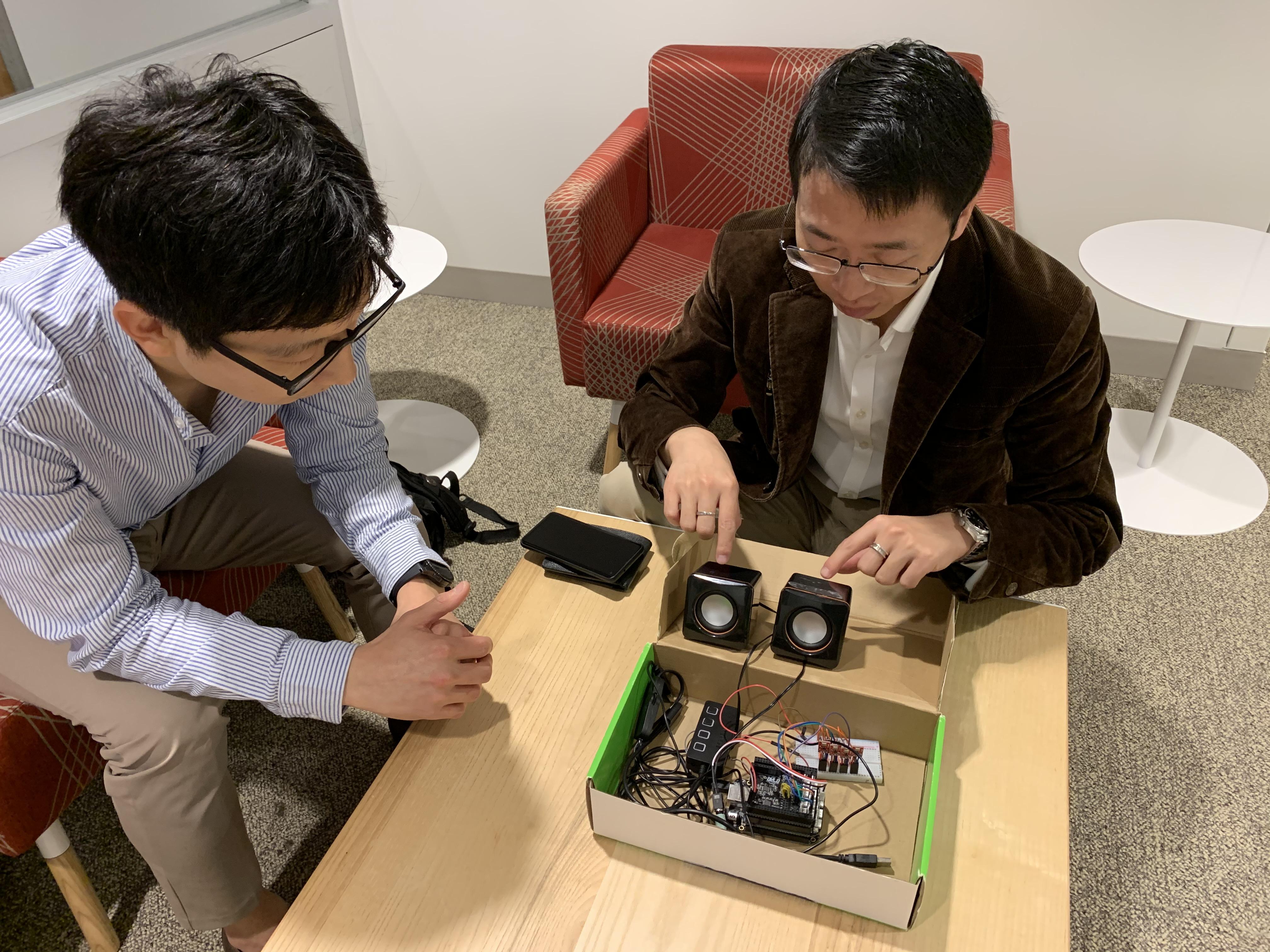UMass Amherst Scientists Developing Necklace-like Wireless Device to Improve Understanding of Schizophrenia
Biomedical informatician Sunghoon Ivan Lee and wireless health scientist Jie Xiong have received a $1.15 million grant from the National Institutes of Health (NIH) to develop a wireless device, worn like a necklace, that aims to transform the understanding and treatment of schizophrenia. The assistant professors of information and computer sciences are among the interdisciplinary scientists at IALS, where they will carry out their research in the Center for Personalized Health Monitoring.
The two high-tech health researchers took on the project after a Harvard Medical School psychiatrist at Massachusetts General Hospital approached Lee about inventing a way to measure the social interactions of people with schizophrenia.
Lee and Xiong are designing a device that uses acoustic signals to detect humans with whom the patient interacts. The discrete, necklace-like device will also use an ultrasound signal to simultaneously measure the distances of multiple targets within an accuracy of two centimeters. Xiong explains that the Doppler effect, together with the signal phase/amplitude change, enables the researchers to detect subtle movement, such as breathing and arm gestures, which can provide additional, meaningful data. A GPS capability will reveal whether the patient’s behavior changes in different environments and locations.
“All those multimodal data will be analyzed to find a correlation to the patients’ symptoms,” Lee says. The device will not record conversations or other data that could be intrusive.

